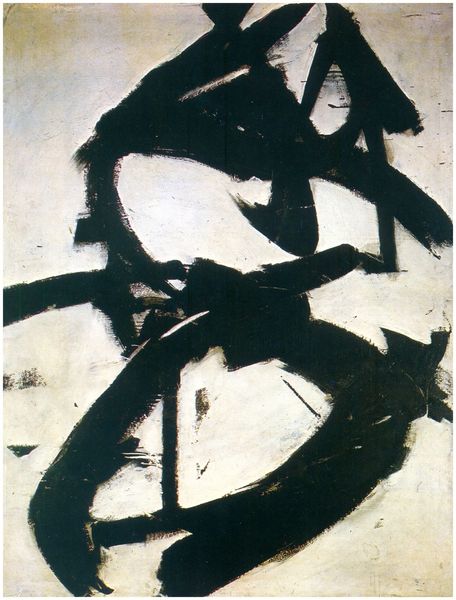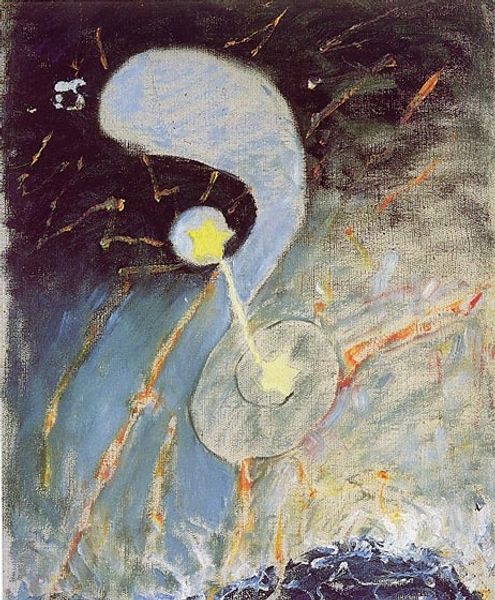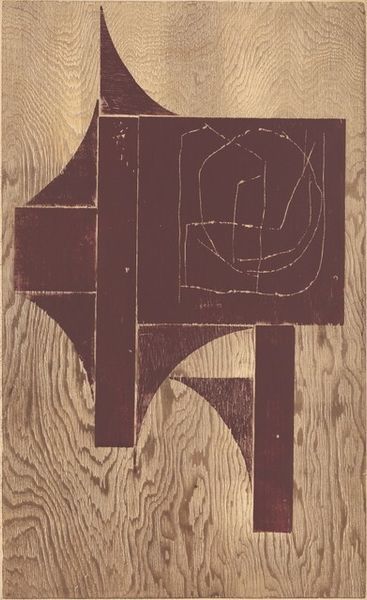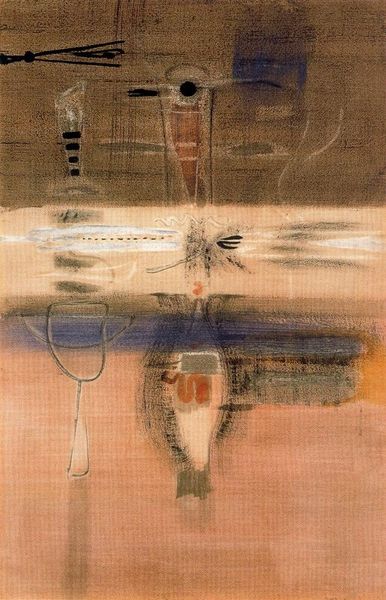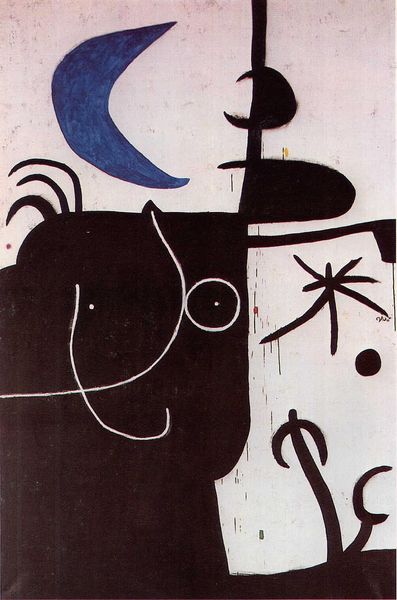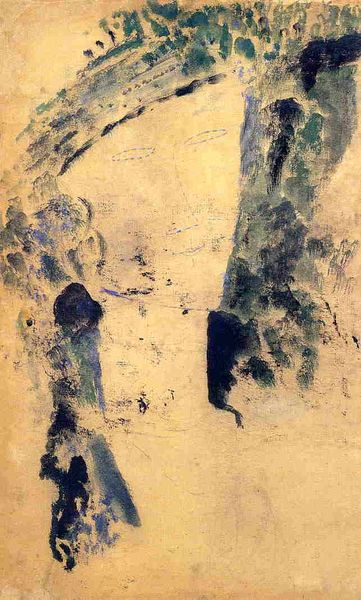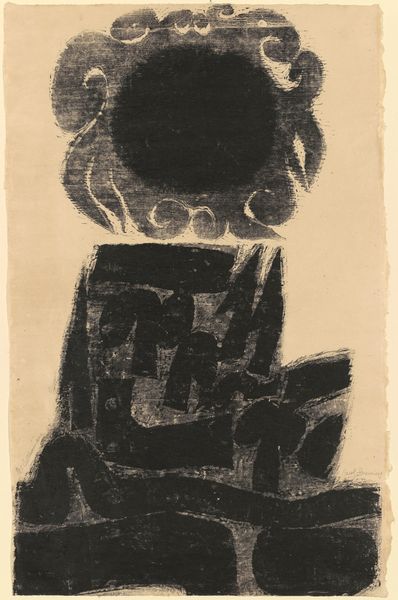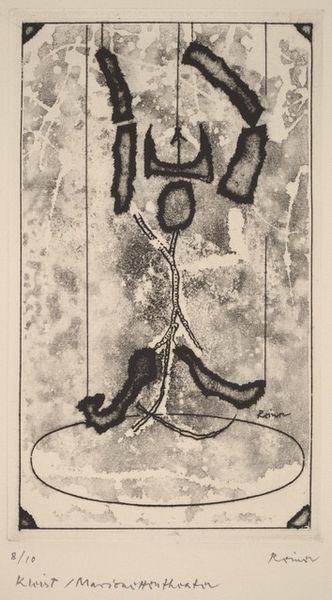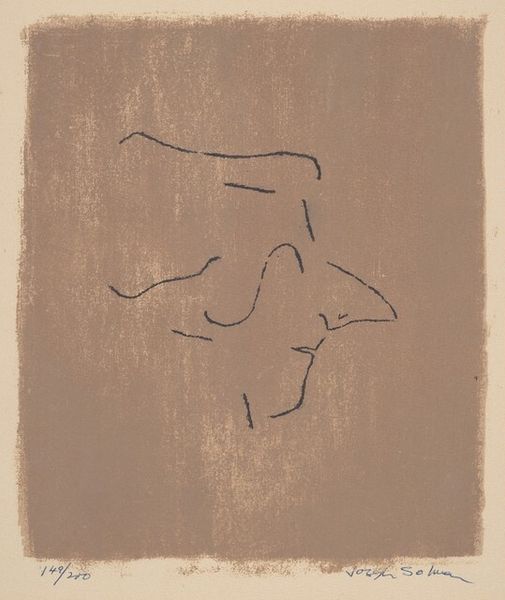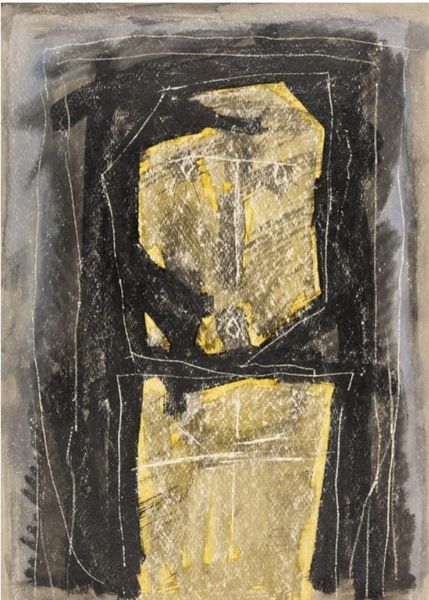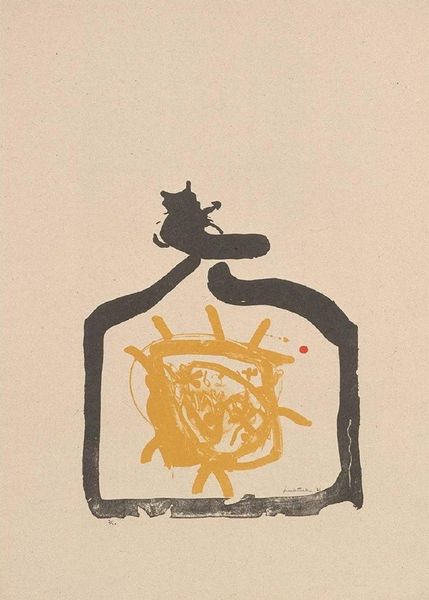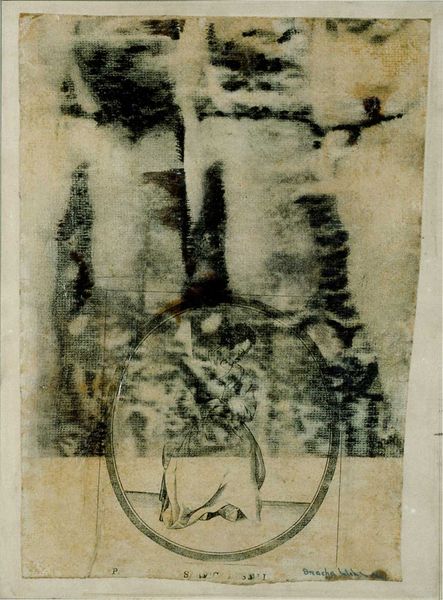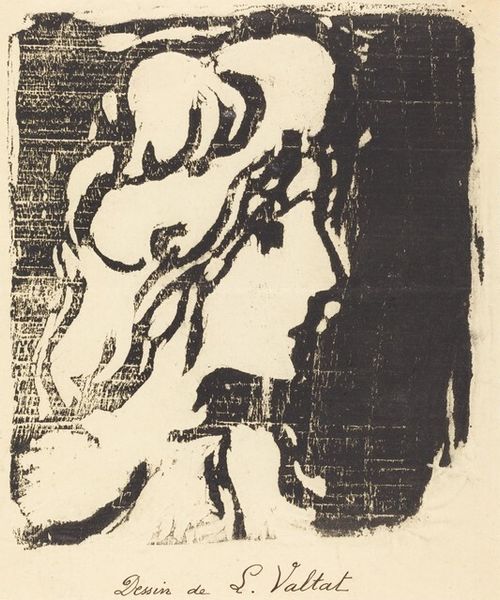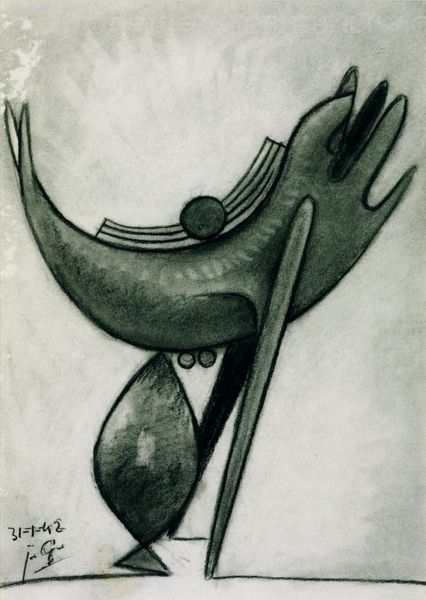
painting, oil-paint
#
painting
#
oil-paint
#
figuration
#
oil painting
#
abstraction
#
surrealism
#
modernism
Copyright: Endre Balint,Fair Use
Curator: Let's pause here at Endre Balint’s 1952 oil painting, “Stone Bird.” The piece is rendered in somber hues over what otherwise feels like a rather sunny backdrop. What strikes you? Editor: It’s surprisingly... solemn, isn't it? A very stoic little bird atop what looks like the ruins of an ancient marker. It reminds me a bit of a grave marker, only stylized. The whole image feels like a meditation on memory and loss, painted with an unexpectedly light touch, yet its overall form feels totemic somehow. Curator: I love that interpretation. It's almost as if Balint is wrestling with how symbols become relics, emptied of their original meaning over time. Consider the bird itself: across cultures, it signifies freedom, spirit, even prophecy, but here it appears weighty, almost petrified. The title really anchors that. Editor: Precisely! And look at the platform on which it stands – the shapes seem to reference architectural ruins. Balint is pointing to how once vibrant, meaningful forms can be eroded, reduced to abstract remnants. This is what I think brings to mind something that is psychological because everything blends, like one of Carl Jung’s visions of past existence. Curator: That architectural suggestion is very powerful. I find myself questioning if the bright background is truly sunny, or more akin to the artificial, optimistic glow we often apply to nostalgic memories. Editor: Yes, maybe it's less about sunlight and more about… endurance? That golden field as a constant, contrasting with the ephemerality suggested by the crumbling stone figure. The sharp angles on the 'wings', that one white part in its 'skull', and the odd dripping feature out of the lower mass, however, also suggest motion and action... and yet again its title and the forms within bring me back to stagnation, solid shapes. Curator: It’s fascinating how the materiality of oil paint contributes to this tension, as the visible brushstrokes and textural nuances provide both depth and a sense of age. Is it hopeful or is it elegiac, though? Editor: Maybe it is a reminder that everything is indeed both? Or rather that they intertwine together for our psychological appreciation... like it did with Carl Jung. The symbolism keeps unfolding. Well, I know I certainly see the painting differently now. Curator: Me too. Endre Balint’s subtle orchestration of form and symbol really prompts us to reconsider the stories we tell ourselves about the past, I think. It remains etched, yet like every painting we discover things within ourselves with repeated glances and the passage of time.
Comments
No comments
Be the first to comment and join the conversation on the ultimate creative platform.
